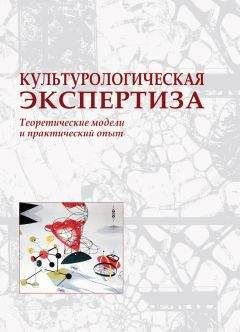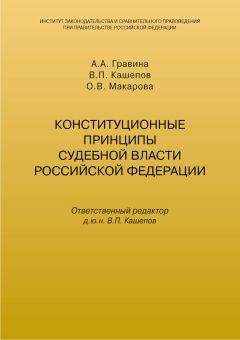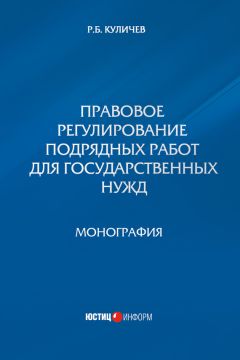Johnson, M. K. & Raye, C. L. (1981). Reality monitoring. Psychological Review, 88, 61–85.
Johnson, M.K. & Raye, C.L. (1998). False memories and confabulation. Trends in Cognitive Sciences, 2,131–145.
Johnson, M. M. & Rosenfeld, P.J. (1991). Oddball-evdked рЗОО-based method of deception detection in the laboratory. II. Utilization of non-selective activation of relevant knowledge. International Journal of Psychophysiology, 12, 289–306.
Johnson, M. K. & Suengas, A. G. (1989). Reality monitoring judgments of other people's memories. Bulletin of the Psychonomic Society, 27, 101–110.
Johnson, M. K., Foley, M. A., Suengas, A. G. & Raye, C. L. (1988). Phenomenal characteristics of memories for perceived and imagined autobiographicalevents. Journal of Experimental Psychology: General, 111, 311–316.
Johnson, M. K., Hashtroudi, S. & Lindsay, B. S. (1993). Source monitoring. Psychological Bulletin, 114,3-29.
Kalbfleisch, P. (1992). Beceit, distrust and the social milieu: application of deception research in a troubled world.Journal of Applied Communication Research, 20,308334.
Kalbfleisch, P.J. (1994). The language of detecting deceit. Journal of Language and Social Psychology, 13, 469–496.
Kalma, A., Witte, M. & Zaalberg, R. (1996). Authenticity: operationalization, manipulation, and behavioural components: an explanation. Medium Psychologic, 5,49–65.
Kashy, B. A. & BePaulo, В. M. (1996). Who lies? Journal of Personality and Social Psychology,!0,1031–1051.
Kassin, S. M. (1991). The psychology of confession evidence. American Psychologist, 52,221–233.
Kircher, J. C. & Raskin, В. С. (1988). Human versus computerized evaluations of polygraph data in a laboratory setting. Journal of Applied Psychology, 13, 291–302.
Kircher, J. C., Horowitz, S. W. & Raskin, В. C. (1988). Meta-analysis of mock crime studies of the control question polygraph technique. Law and Human Behavior, 12, 19–90.
Kleinke, C. L. (1986). Gaze and eye contact: a research review. Psychological Bulletin, 100,18-100.
Kleinmuntz, B. & Szucko, J. J. (1982). On the fallibility of lie detection. Law and Society Review, 11, 85104.
Kleinmuntz, B. & Szucko, J. J. (1984). Lie detection in ancient and modern times: a call for contemporary scientific study. American Psychologist, 39, 166–116.
Kline, P. (1993). The handbook of psychological testing. New York: Routledge.
Knapp, M. L., Hart, R. P. & Bennis, H. S. (1914). An exploration of deception as a communication construct. Human Communication Research, 1,15–29.
Kdinken, G. (1985). Speech and deception of eyewitnesses: an information processing approach. In F. L. Benmark (Ed.), The psychology of women. Amsterdam: Elsevier Science Publishers, 111–139.
Kdinken, G. (1981). Training police officers to detect deceptive eyewitness statements. Boes it work? Social Behaviour, 2, 1-11.
Kdinken, G. (1989). Behavioral correlates of statement credibility: theories, paradigms and results. In H. Wegener, F. Losel & J. Haisch (Eds), Criminal behavior and the justice system: psychological perspectives. New York-Springer-Verlag, 211–289.
Kdinken, G. (1990). Glaubwiirdigkeit: Untersuchungen zu einem psycholo-gischen konstrukt. Munich: Psychologie Verlags Union.
Kdinken, G. (1996). Social psychology and the law. In G. R. Semin & K. Fiedler (Eds), Applied Social Psychology. London: Sage Publications, 251–282.
Kdinken, G. & Wegener, H. (1982). Zur Glaubwiirdigkeit von Zeugenaussagen: Experimentelle Uberprufungausgewahlter Glaubwiirdigkeitskriterien (Credibility of witness statements: experimental examination of selected reality criteria). Zeitschrift fur Experimentelle und Angewandte Psychologie 29, 92-111.
Kdinken, G., Milne, R., Memon, A. & Bull, R. (in press). The cognitive interview: a metaanalysis. Psychology, Crime, and Law.
Kdinken, G., Schimossek, E., Aschermann, E. & Hofer, E. (1995). The cognitive interview and the assessment of the credibility of adults' statements. Journal of Applied Psychology, 80, 611–684.
Koppelaar, L., Winkel, F.W. & Steen, J. C. van der (1986). Psychologische kant-tekeningen bij art 21 Sv.: een experiment rond etnische origine, ritmisch gedrag en verdacht zijn. Delikt en Delinkwent, 16, 25–38.
Krauss, R. M. (1981). Impression formation, impression management, and nonverbal behaviors. In E. T. Higgins, C. P. Herman & M. P. Zanna (Eds), Social cognition: the Ontario Symposium. Vol. 1. Hillsdale, NJ: Erlbaum, 323–341.
Kraut, R. E. (1918). Verbal and nonverbal cues in the perception ofdying. Journal of Personality and Social Psychology, 36, 380–391.
Kraut, R. E. (1980). Humans as lie detectors: some second thoughts. Journal of Communication, 30, 209216.
Kraut, R. E. & Рое, D. (1980). On the line: the deception judgments of customs inspectors and laymen.Journa/ of Personality and Social Psychology, 36,380–391.
Kuhlman, M. S. (1980). Nonverbal communications in interrogations. FBI Law Enforcement Bulletin, 49,6–9.
Lamb, M. E. (1998). Mea culpa but caveat emptor! Response to Tully. Legal and Criminological Psychology, 3,193–195.
Lamb, M. E., Esplin, P. W. & Sternberg, K.J. (1995). Making children into competent witnesses: reactions to the Amicus Brief in re Michaels.Psychology, Public Policy and Law, i, 438–449.
Lamb, M. E., Hershkowitz, I., Sternberg, K. J., Esplin, P. W, Hovav, M., Manor, M. & Yudilevitch, L. (1996). Effects of investigative utterance types on Israeli children's responses. International Journal of Behavioral Development, 19, 621–631.
Lamb, M. E., Sternberg, K.J. & Esplin, P. W. (1994). Factors influencing the reliability and validity of statements made by young victims of sexual maltreatment.yoMrwa/of Applied Developmental Psychology, 15, 255–280.
Lamb, M. E., Sternberg, K. J., Esplin, P. W., Hershkowitz, I., Orbach, Y. & Hovav, M. (1991). Criterion-based content analysis: a field validation study. Child Abuse and Neglect, 21, 255–264.
Lamb, M. E., Sternberg, K. J., Esplin, P. W., Hershkowitz, I. & Orbach, Y. (1991). Assessing the credibility of children's allegations of sexual abuse: a survey of recent research. Learning and Individual Differences, 9,115–194.
Lamers-Winkelman, F. (1995). Seksueel misbniik vanjonge kinderen: een onderzoek naar signalen en signaleren, en naar ondervragen en vertellen inzake seksueel misbniik. Amsterdam: VU Uitgeverij.
Lamers-Winkelman, F. & Buffing, F. (1996). Children's testimony in the Netherlands: a study of Statement Validity Analysis. In B. L. Bottoms & G. S. Goodman (Eds), International perspectives on child abuse and children's testimony. Thousand Oaks, CA: Sage, 45–62.
Landry, K. & Brigham, J. С. (1992). The effect of training in Criteria-Based Content Analysis on the ability to detect deception in adults. Law and Human Behavior, 16, 663–615.
Lane, J. D. & DePaulo, В. M. (1999). Completing Coyne's cycle: dysphorics' ability to detect deception. Journal of Research in Personality, 33, 311–329.
Larson, J. A. (1932). Lying and its detection: a study of deception and deception tests. Chicago, IL: University of Chicago Press.
Levine, T. R. & McCornack, S. A. (1992). Linking love and lies: a formal test of the McCornack and Parks model of deception detection.Journal of Social and Personal Relationships, 9,143–154.
Levine, T. R. & McCornack, S. A. (1996a). A critical analysis of the behavioral adaptation explanation of the probing effect. Human Communication Research, 22,515–588.
Levine, T. R. & McCornack, S. A. (1996b). Can behavioral adaptation explain the probing effect?Human Communication Research, 22, 604–613.
Levine, T. R., McCornack, S. A. & Aleman, С G. (1991). Ask and you shall believe: behavioral adaptation, confidence, and heuristic-based explanations of the probing effect. Unpublished manuscript.
Levine, T. R., McCornack, S. A. & Park, H. S. (1999). Accuracy in detecting truths and lies: documenting the "veracity effect". Communication Monographs, 66,125–144.
Lewis, M. (1993). The development of deception. In M. Lewis & C. Saarni (Eds), Lying and deception in everyday life. New York: The Guilford Press, 90-105.
Lindsay, D. S. & Johnson, M. K. (1981). Reality monitoring and suggestibility: children's ability to discriminate among memories from different sources. In S.J. Ceci, J. Toglia & D. F. Ross (Eds), Children's eyewitness memory. New York: Springer-Verlag, 91-121.
Littlepage, G. E. & Pineault, M. A. (1985). Detection of deception of planned and spontaneous communications. Journal of Social Psychology, 125,195–201.
Littmann, E. & Szewczyk, H. (1983). Zu einigen Kriterien und Ergebnissen foren-sisch-psychologischer Glaubwurdigkeitsbegutachtung von sexuell misbrauchten Kindern und Jugendlichen. Forensia, 4, 55–12.
Loftus, E. F. & Palmer, J. C. (1914). Reconstructions of automobile destruction: an example of the interaction between language and memory. Journal of Verbal Learning and Verbal Behavior, 13, 585589.
Lord, C. G., Ross, L. & Lepper, M. R. (1919). Biased assimilation and attitude polarization: the effects of prior theories on subsequently considered evidence. Journal of Personality and Social Psychology, 31, 2098–2109.
Lykken, D. T. (1959). The GSR in the detection of guilt. Journal of Applied Psychology, 43, 385–388.
Lykken, D. T. (1960). The validity of the guilty knowledge technique: the effects of faking. Journal of Applied Psychology, 44, 258–262.
Lykken, D. T. (1988). The case against polygraph testing. In A. Gale (Ed.), The polygraph test: lies, truth, and science. London: Sage, 111–126.
Lykken, D. T. (1991). Why (some) Americans believe in the lie detector while others believe in the Guilty Knowledge Test. Integrative Physiological and Behavioral Science, 126,214–222.
Lykken, D. T. (1998). A tremor in the blood: uses and abuses of the lie detector. New York: Plenum Press.
McClintock, C.C. & Hunt, R.G. (1915). Nonverbal indicators of affect and deception in an interview setting. Journal of Applied Social Psychology, 5, 54–61.
McCornack, S. A. (1991). The generation of deceptive messages: laying the groundwork for a viable theory of interpersonal deception. In J. G. Greene (Ed.), Message production: advances in communication theory. Mahwah, N J Erlbaum, 91-126.
McCornack, S. A. & Levine, T. R. (1990). When lovers become leery: the relationship between suspicion and accuracy in detecting deception. Communication Monographs, 51,219–230.
McCornack, S. A. & Parks, M. R. (1986). Deception detection and relationship development: the other side of trust. In M. McLaughlin (Ed.), Communication Yearbook 9. Beverly Hills, CA: Sage, 311–389.
McCornack, S. A. & Parks, M. R. (1990). What women know that men don't: sex differences in determining truth behind deceptive messages. Journal of Social and Personal Relationships, 1, 101–118.
McCroskey, J. C. & Mehrley, S. (1969). The effects of disorganization and nonfluency on attitude change and source credibility. Speech Monographs, 36, 13–21.
Mann, S., Vrij, A. & Bull, R. (1998). Telling and detecting true lies. Paper presented at the Eighth Annual Meeting of the European Association on Psychology and Law in Cracow, Poland, September 1998.
Manstead, A. S. R., Wagner, H. L. & MacDonald, C.J. (1986). Deceptive and non-deceptive communications: sending experience, modality, and individual abilities. Journal of Nonverbal Behavior, 10, 141–161.




